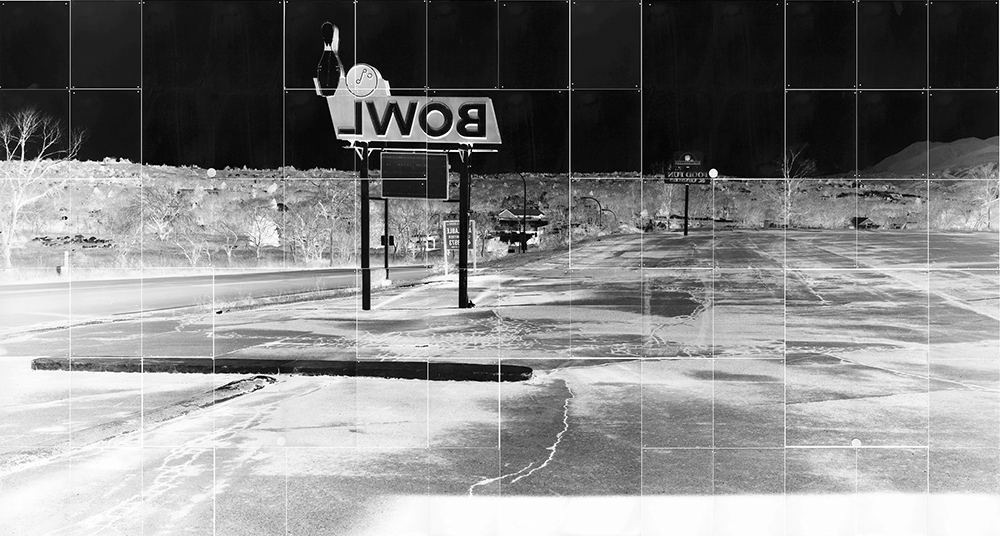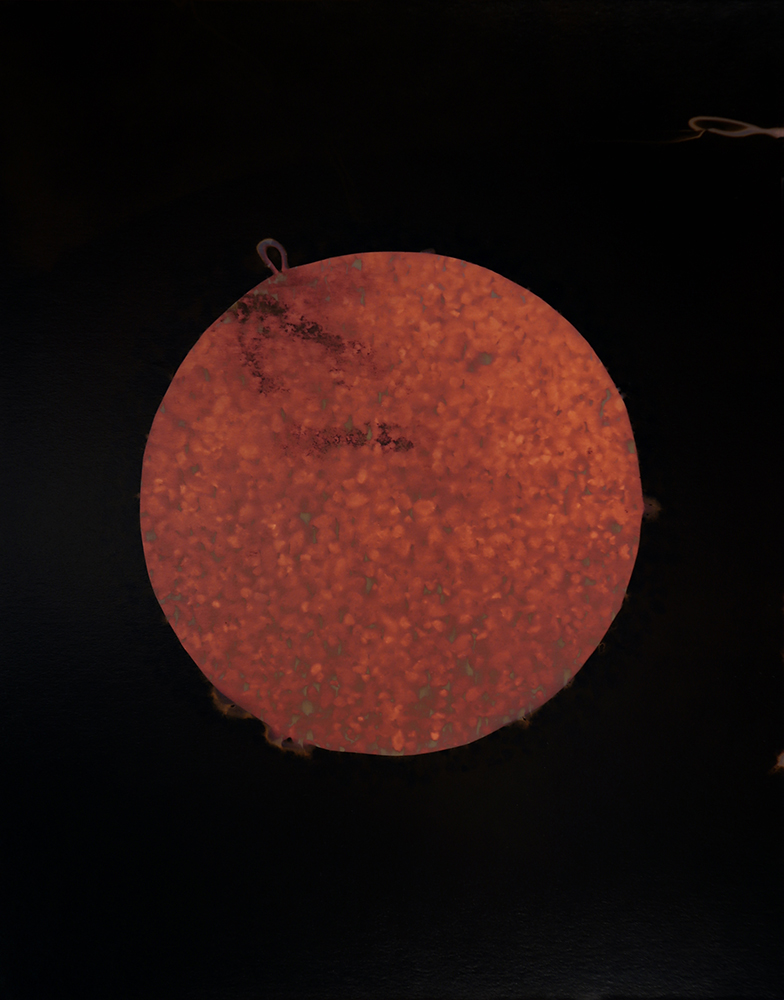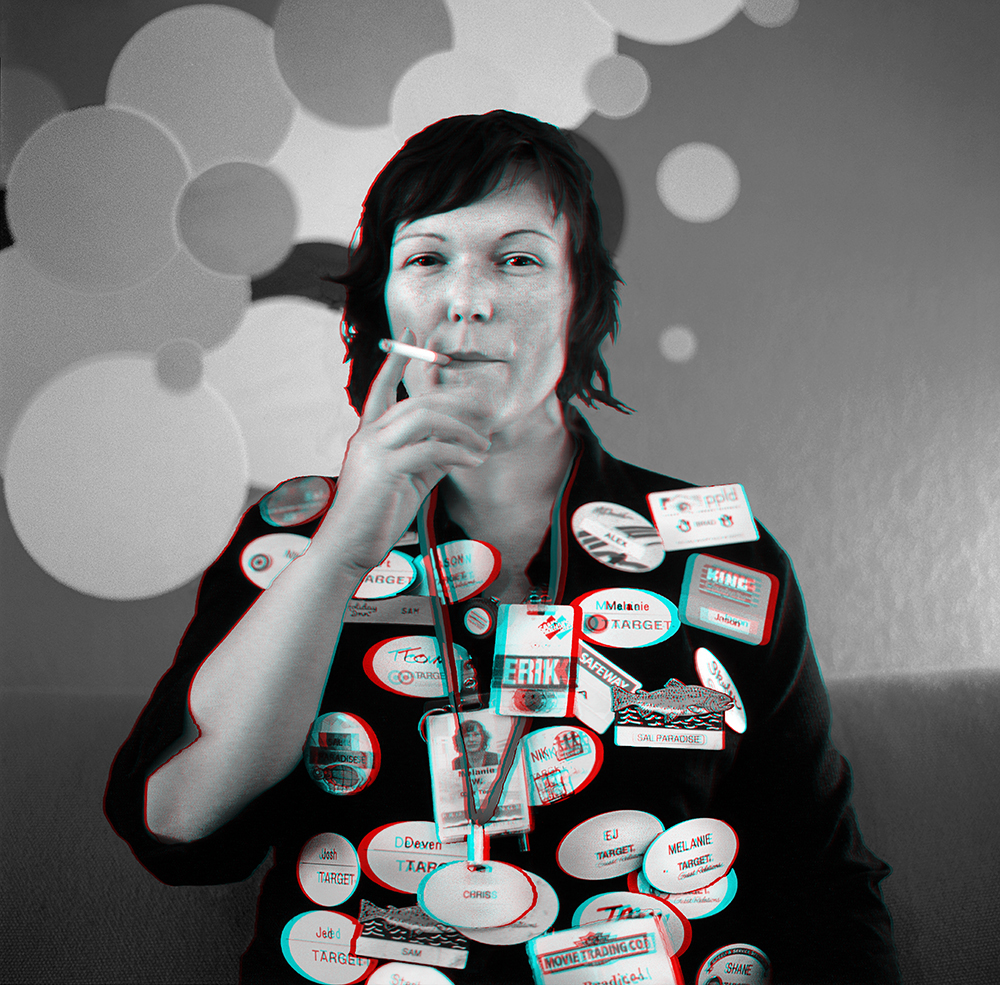Photographers on Photographers: Christa Blackwood and Heather Oelklaus
I was a secret lurking fan of Heather Oelklaus’ brilliant work for several years before I met her in the Fall of 2014 at Colorado College in Colorado Springs. Before we met, I knew her only by her internet nom de plume, “Camera Karma,” and I was immediately drawn to her work that melds tediously technical and arduous historical photographic techniques with slyly subversive and humorous concepts. My daughter, Cecil, was checking out schools in Colorado for her undergraduate degree, and I knew from Heather’s Facebook profile that she worked at the art department at Colorado College. I eventually mustered up the courage to send this alt-pro-goddess a message on Facebook to tell her that we would be visiting Colorado College for a campus tour, and that we would love to meet her if at all possible. I was delighted when she quickly and enthusiastically responded and said that she’d love to give us a tour of the art department, and to take us to lunch on campus-score! Over the years Heather has become one of my dear friends and close colleagues, and my admiration for her and her work has grown exponentially. I was thrilled to be given the opportunity to ask her a few questions about her photographic work, as well as where she drew inspiration from for her most recent series, Anaglyph.
 Heather Oelklaus (b. 1972, USA) studied Sculpture at The Kansas City Art Institute (KCAI) in the early 1990s. She has exhibited work in solo and group shows in Colorado, New Orleans, Oregon, New York, Texas, and Arizona. Heather creates in Colorado Springs where she explores a variety of art making. Photography as an object instead of the traditional reproduced image influences Heather’s art with themes of family, social and gender roles, and abstract art. The viewer’s experience is just as important as the image itself, she encourages you to take your time.
Heather Oelklaus (b. 1972, USA) studied Sculpture at The Kansas City Art Institute (KCAI) in the early 1990s. She has exhibited work in solo and group shows in Colorado, New Orleans, Oregon, New York, Texas, and Arizona. Heather creates in Colorado Springs where she explores a variety of art making. Photography as an object instead of the traditional reproduced image influences Heather’s art with themes of family, social and gender roles, and abstract art. The viewer’s experience is just as important as the image itself, she encourages you to take your time.
Christa Blackwood: There’s a wondrous sense of playfulness and irony in your work that highlights re-occurring subjects with themes — kitsch, gender, Americana and Hollywood in the 50’s, cowboys, housewives, doctors/nurses, guns and even kiddy breakfast cereals — How did you get here? Where did you grow up? Did you always know that you were going to be a visual artist?

©Heather Oelklaus, “Bowl” // SixtyTwo Silver Gelatin Prints // 2015// Taken with the pinhole camera truck, Little Miss Sunshine
Heather Oelklaus: My upbringing in a small Iowa town has influenced my conceptual direction over the years. My imagination has always been vivid and hearing family members’ stories while I was young was a delight.
Heather Oelklaus: Stories that took place during a time where people trusted one another, played high school pranks, had small town childhood freedom, and roles that were always being challenged sent my mind reeling. I was proud to have a Great Grandmother that left her husband after the first time he hit her. The courage to do that in the early 1950’s seemed like a sort of super power in my fertile mind. Cereal, Spam, cowboys, housewives, black and white photography with staged sharp imagery, and ideals of family roles made their way into my work throughout the years. When asked what I wanted to be when I grew up I always said “artist” and never even considered any other option. The ego is a powerful influence. I remember being sick with a high fever when I was ten years old. I had drawn a picture of Mickey Mouse and my Mother was really impressed. When I think back about that moment I visualize it as a lightning bolt marking the time I knew I was going to be an artist.
CB: Can you tell us about your most recent series, Anaglyph? What is the inspiration behind the 3-D work?
HO: The inspiration for this new body of work is my old body of work. The images were first introduced in the “Better Homes & Icons” Series back when I was a young Mother. Each image was shot on film and highly staged with each object chosen for their metaphor. Inspiration hit while I was cleaning dishes, cooking dinner, shopping for groceries, and changing diapers. These domestic times, quiet times, sometimes lonely times pushed me to express my feelings.
The series did not get shown as much as I would like and time sped by with new interests and inspirations. The older my daughter got, the more distant I felt from those ideas I had expressed in the “Better Home & Icons” series. Now, 15 years later, I have grown disconnected with photography or at least what my idea of what photography means to me. Going back and examining my old work lit a fire and I searched for a way to make people see what I was showing them with the objects as metaphor in the staged scenes. I long for the viewer to take the time to see what I am saying. In a world where virtual reality is growing in leaps and bounds, my answer to capturing the fleeting attention of the viewer is to make the objects in the staged photographs jump off the surface of the image. This analog version of virtual reality is a delight to viewers. It is approachable and gives the audience their own experience with each work of art. To be able to provide this solitary time while sneaking in a message is what I have always wanted to accomplish with these photographs. The anaglyph series is small with editions of five. Special edition collector’s 3D glasses accompany each work of art sold within the series. The glasses go hand in hand with the visual narrative of the work. “Dirty Laundry, Anaglyph” portrays a woman delighting in a snack in the only place where no one will find her stash of sprinkled doughnuts; so the collector’s glasses I made for this image is made out of sprinkles. I have also made glasses out of sugar cookie, pill bottle plexiglass, blue satin, wood, and a Tide laundry detergent box.
CB: It’s such a joy to see someone that has mastered so many historical photographic techniques — tintypes, daguerreotypes, ginormous silver prints, lumens, cyanotypes, hand made pinhole cameras made from everyday objects — and to see these processes fused with contemporary ideas and humor. What typically comes first to you, the idea behind the work or the process/technique?
HO: Concepts hold a priority in my studio practice. It makes little sense to me to want to do a process and THEN try to come up with an idea solely to use that technique. My process is similar to getting ready for a party….you must accessorize! The concept is the party and the accessory is the technique. They must go hand in hand. They must go together. When I have an idea for a piece or body of work, if it is best translated through a kinetic sculpture, then I will learn how to create kinetic sculptures. There are no bounds to my work, I never want to be stopped by sticking to just one way of expressing myself.
Christa Blackwood is a photo, text and installation artist working with themes related to identity, history, and popular culture. Her visual voice was developed while a student at New York University, when she began producing street installation art such as Butcherknives (1991), a work that addressed issues of sexual violence. A chilling juxtaposition of billboard-like close-ups and text from poet Michelle Kotler, Butcherknives, was plastered all over the streets of lower Manhattan on the evening that the William Kennedy Smith verdict was announced. The poster’s timely and provocative appearance resulted in heightened critical attention for Blackwood, including an invitation to join the Women’s Action Coalition (WAC) from renowned artists and scholars, Kiki Smith and Lucy Lippard.
Her works employ multiple techniques and methods, fusing traditional, historical and alternative processes with contemporary practices, street art and clandestine installations at cultural institutions. Blackwood received her Masters in Studio Art from New York University and Bachelors in Classics from The University of Oklahoma. Her work has been featured in several publications including The New York Times, NYQ, New York Newsday, The Village Voice and The Chicago Sun Times. She has exhibited in galleries and museums throughout the U.S. and abroad.
Posts on Lenscratch may not be reproduced without the permission of the Lenscratch staff and the photographer.
Recommended
-
Carolina Baldomá: An Elemental PracticeJanuary 5th, 2026
-
Time Travelers: Photographs from the Gayle Greenhill Collection at MOMADecember 28th, 2025
-
Suzette Dushi: Presences UnseenDecember 27th, 2025
-
Ragne Kristine Sigmond: Portraits of Painterly LightDecember 2nd, 2025






































































